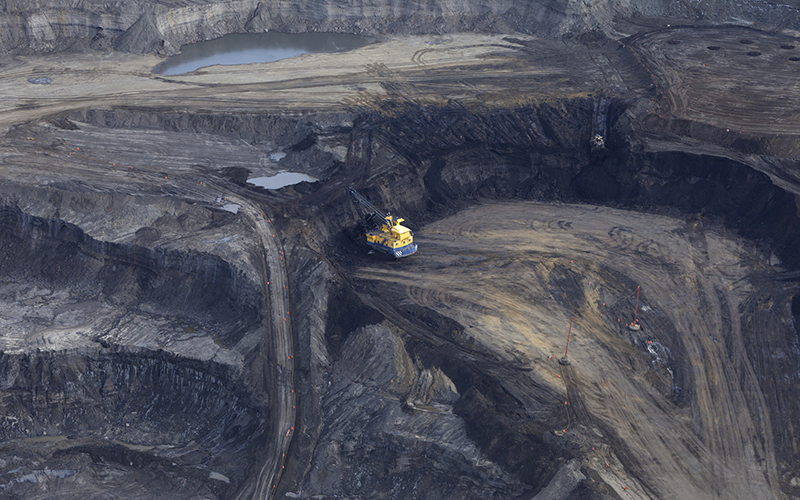Canada’s oil sands to remain a growth story
Oil sands have never had it easy, say Jamie Webster and Borja Jimenez, but the oil is there and exploitation is profitable.

US shale and Canada’s oil sands will be big contributors to supply growth in coming years. As new projects open and OPEC acknowledges their significant role in the oil market, consultants at The Boston Consulting Group analyse these two pillars of North America’s energy security.
Since the oil price collapse in 2014, oil sands production has increased more than 500,000 barrels per day and is expected to reach more than 3m barrels per day (MMbbl/d) by the end of the decade. At the same time, oil sands sit at the top of the cost curve, have higher overall emissions and are located at the end of companies' project pipelines, with several large producers already divesting. The potential of peak demand is also adding additional long-term pressure to the resource base. Yet the resilience of Canadian oil sands during the price decline is likely to be the trend rather than a blip.
Now more competitive
The second largest source of untapped oil reserves in the world has always had enviable features. A stable political environment, low decline rates on long-lived assets and virtually no exploration risk are just some of the attractions. But it is also now more competitive than just a couple years ago, with costs down significantly. The price differential between oil sands crude oil and the West Texas Intermediate – the US benchmark – which at times was over US$30 per barrel, has decreased and stabilised. Continued growth in pipeline capacity could reduce this discount further.
Perfect partner
US shale production and an expanded refinery system continue to offer increased opportunities for the heavy grade, both for blending and as feedstock in growing US coking capacity. At the beginning of 2011, as US light tight oil production began to rise, Canadian crude exports to the US were about 1.9MMbbl/d, rising to 2.9MMbbl/d at the start of the price decline in 2014. Current exports are about 3.2MMbbl/d.
Why did Canadian crude heading to the US grow by 1.3MMbbl/d as the total US import number fell by more than 2MMbbl/d over the same period?
Oil sands serve as a perfect partner for the complex US Gulf Coast refining system, particularly given the reduced heavy crude imports from Venezuela and Mexico. It also serves as a great partner for some of the very light shale crudes with no heavy crude residue (bottoms), blending to a more economical grade. Finally, more Canadian crude is being exported out of the Gulf Coast of the US to feed global refineries in need of heavier grades, especially during this time of OPEC cuts when there is a relative dearth of medium sours available.
Continued growth
This expansion in production and rise in global demand is not a one off. The Boston Consulting Group’s (BCG) analysis shows a continued rise in Canadian oil sands supply in the future, which is expected to be up more than 500,000bbl/d over the next 15 years. It will also increase its market share in the expanding global oil market, up from the current 3.1% in the 2015–19 period, rising to 3.6% in the 2020–24 period – a share it is expected to maintain throughout our forecast horizon.
Costs for Canadian oil sands projects ballooned in the early part of the decade, with 2014 costs for bitumen
in a steam-assisted gravity drainage project estimated at US$53 per barrel, an almost four-fold increase from a decade prior. Like nearly all projects around the world, oil sands costs are down substantially allowing investment to again proceed as many players now look to replenish their portfolios. In the next five years more than US$8bn is expected to be directly invested in oil sands projects.
Carbon challenge
Despite the increased demand from US and other global refineries, there are challenges ahead for the oil sands.
The recently instituted Alberta carbon tax will have a negative impact on project economics. However, the current
tax rate is unlikely, on its own, to swing any one project to a different decision than without it. The early adoption of a direct carbon cost, assuming it occurs in other countries or regions, as many large
oil companies anticipate in their long-term plans, gives the oil sands an opportunity to become competitive with this extra cost now, potentially allowing a short-term disadvantage to turn into a long-term advantage.
Survival of the fittest
BCG sees global oil demand potentially peaking as soon as midway through the next decade, either through the widespread adoption of electric vehicles, increased natural gas market share in the petrochemicals space or lower global GDP growth.
Should any of these come to pass and peak demand occur, there is a view by some that resources sitting near the top of the supply curve, such as oil sands, will be the first to get cut. While the oil supply cost curve informs what projects are viable at different prices, this is not, however, necessarily the case when less oil is required to fuel the world. Instead the key factors will be quality and location. Decision-making based on this criteria should safeguard oil sands.
Additionally, the global decline rate of already producing fields could require as much as 4MMbbl/d of annual new supply to offset it.
Canadian oil sands have always faced challenges, but the industry seems well equipped to handle them as the global market continues to evolve.
- Canada is the world's 3rd largest in oil reserves.
- Canada is the world's 5th largest producer after Iraq, Russia, Saudi Arabia and the US.
- Growth potential: Conventional oil production decreases and oil sands are expected to grow over time.
By Jamie Webster, Senior Director, BCG Center for Energy Impact and Borja Jimenez, Knowledge Expert and Team Manager of Oil Upstream, The Boston Consulting Group






Follow us
Advertise
Free e-Newsletter